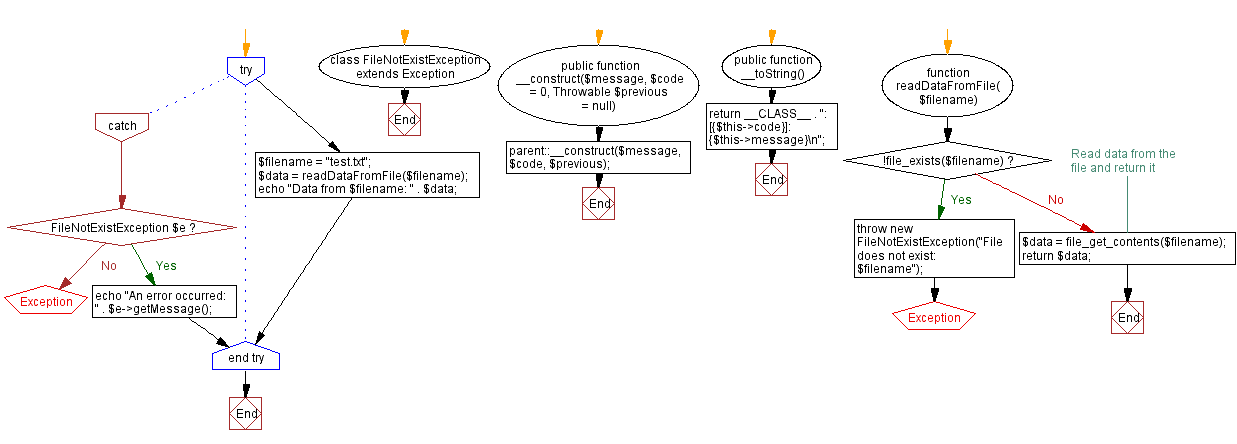PHP File Handling: Custom exception for missing file
5. File Read with Custom Exception
Write a PHP program that reads data from a file and throws a custom exception if the file does not exist.
Sample Solution:
PHP Code :
<?php
class FileNotExistException extends Exception {
public function __construct($message, $code = 0, Throwable $previous = null) {
parent::__construct($message, $code, $previous);
}
public function __toString() {
return __CLASS__ . ": [{$this->code}]: {$this->message}\n";
}
}
function readDataFromFile($filename) {
if (!file_exists($filename)) {
throw new FileNotExistException("File does not exist: $filename");
}
// Read data from the file and return it
$data = file_get_contents($filename);
return $data;
}
try {
$filename = "test.txt";
$data = readDataFromFile($filename);
echo "Data from $filename: " . $data;
} catch (FileNotExistException $e) {
echo "An error occurred: " . $e->getMessage();
}
?>
Sample Output:
An error occurred: File does not exist: test.txt
Explanation:
In the above exercise,
- First, we define a custom exception class FileNotExistException that extends the base Exception class. The custom exception class has a constructor that calls the parent constructor and overrides the __toString() method. This is to provide a custom string representation of the exception.
- Next, we have a function readDataFromFile() that takes a filename as a parameter. Inside the function, we check if the file exists using file_exists() function. If the file does not exist, we throw an instance of the FileNotExistException class with a custom error message indicating the filename.
- If the file exists, we read the data from it using file_get_contents() and return it.
- In the main code, we call the readDataFromFile() function with "test.txt". If the file exists, it reads the data and displays it. If the file does not exist, it catches the FileNotExistException and displays the error message using $e-<getMessage().
Flowchart:

For more Practice: Solve these Related Problems:
- Write a PHP script that attempts to read a file, and if the file does not exist, throws a custom exception that is then caught and reported.
- Write a PHP function to open a file for reading and throw an exception with a specific message if the file cannot be found.
- Write a PHP program to check file existence before reading, throw an exception if not found, and use try-catch to display the error message.
- Write a PHP script to simulate reading a configuration file and handle the potential exception by logging the error and displaying a fallback message.
Go to:
PREV : Handling Different Exception Types.
NEXT : Empty String Exception.
PHP Code Editor:
Contribute your code and comments through Disqus.
What is the difficulty level of this exercise?
Test your Programming skills with w3resource's quiz.
